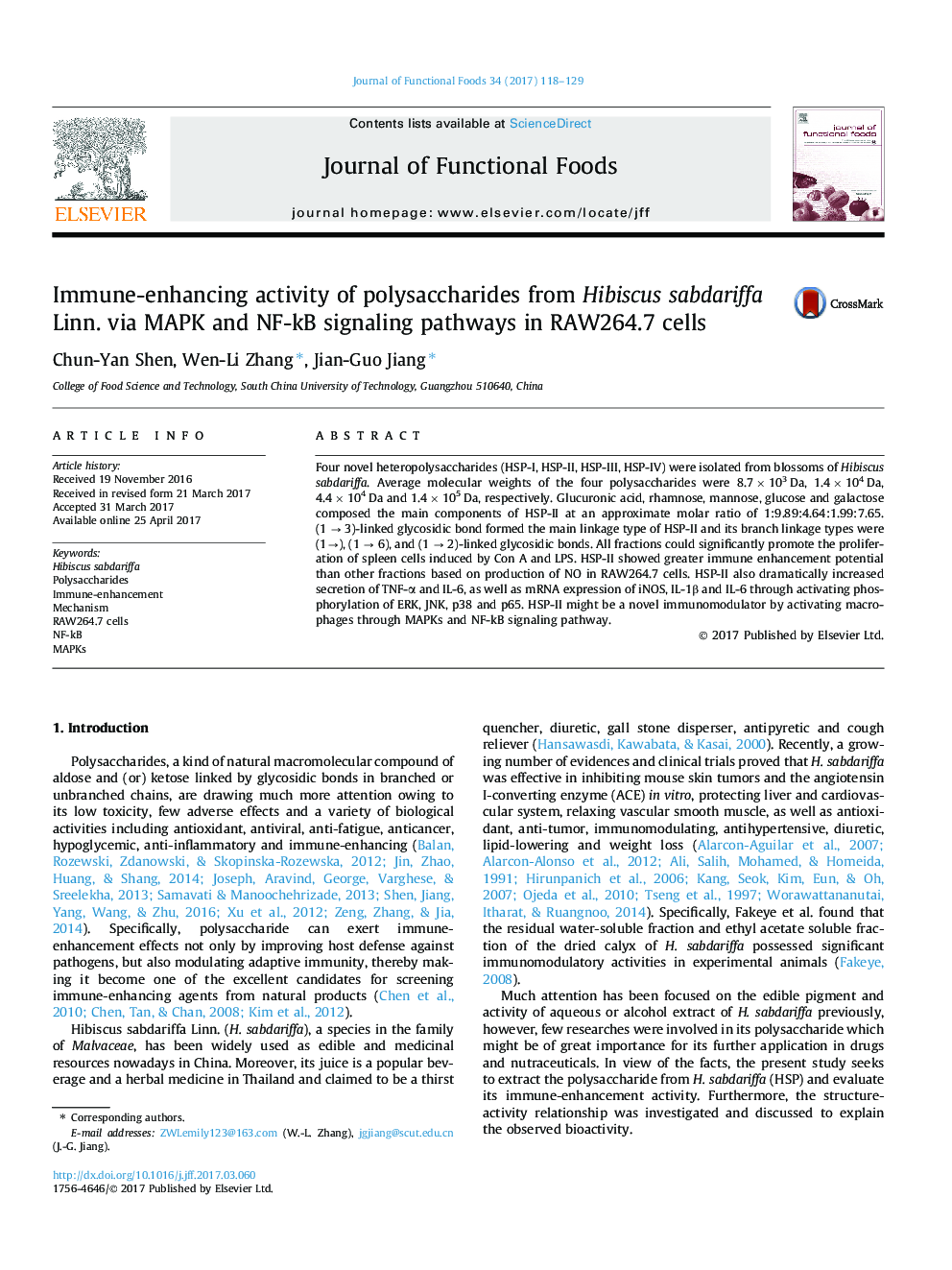| Article ID | Journal | Published Year | Pages | File Type |
|---|---|---|---|---|
| 5137613 | Journal of Functional Foods | 2017 | 12 Pages |
â¢Four homogeneous polysaccharides were obtained from H. sabdariffa.â¢HSPs could significantly promote the proliferation of spleen cells induced by Con A and LPS.â¢Immune-enhancement activity of HAP-II was better than that of HSP-I, HSP-III and HSP-IV.â¢HSP-II might activate macrophages through MAPK and NF-kB signaling pathways.
Four novel heteropolysaccharides (HSP-I, HSP-II, HSP-III, HSP-IV) were isolated from blossoms of Hibiscus sabdariffa. Average molecular weights of the four polysaccharides were 8.7 Ã 103 Da, 1.4 Ã 104 Da, 4.4 Ã 104 Da and 1.4 Ã 105 Da, respectively. Glucuronic acid, rhamnose, mannose, glucose and galactose composed the main components of HSP-II at an approximate molar ratio of 1:9.89:4.64:1.99:7.65. (1 â 3)-linked glycosidic bond formed the main linkage type of HSP-II and its branch linkage types were (1â), (1 â 6), and (1 â 2)-linked glycosidic bonds. All fractions could significantly promote the proliferation of spleen cells induced by Con A and LPS. HSP-II showed greater immune enhancement potential than other fractions based on production of NO in RAW264.7 cells. HSP-II also dramatically increased secretion of TNF-α and IL-6, as well as mRNA expression of iNOS, IL-1β and IL-6 through activating phosphorylation of ERK, JNK, p38 and p65. HSP-II might be a novel immunomodulator by activating macrophages through MAPKs and NF-kB signaling pathway.
